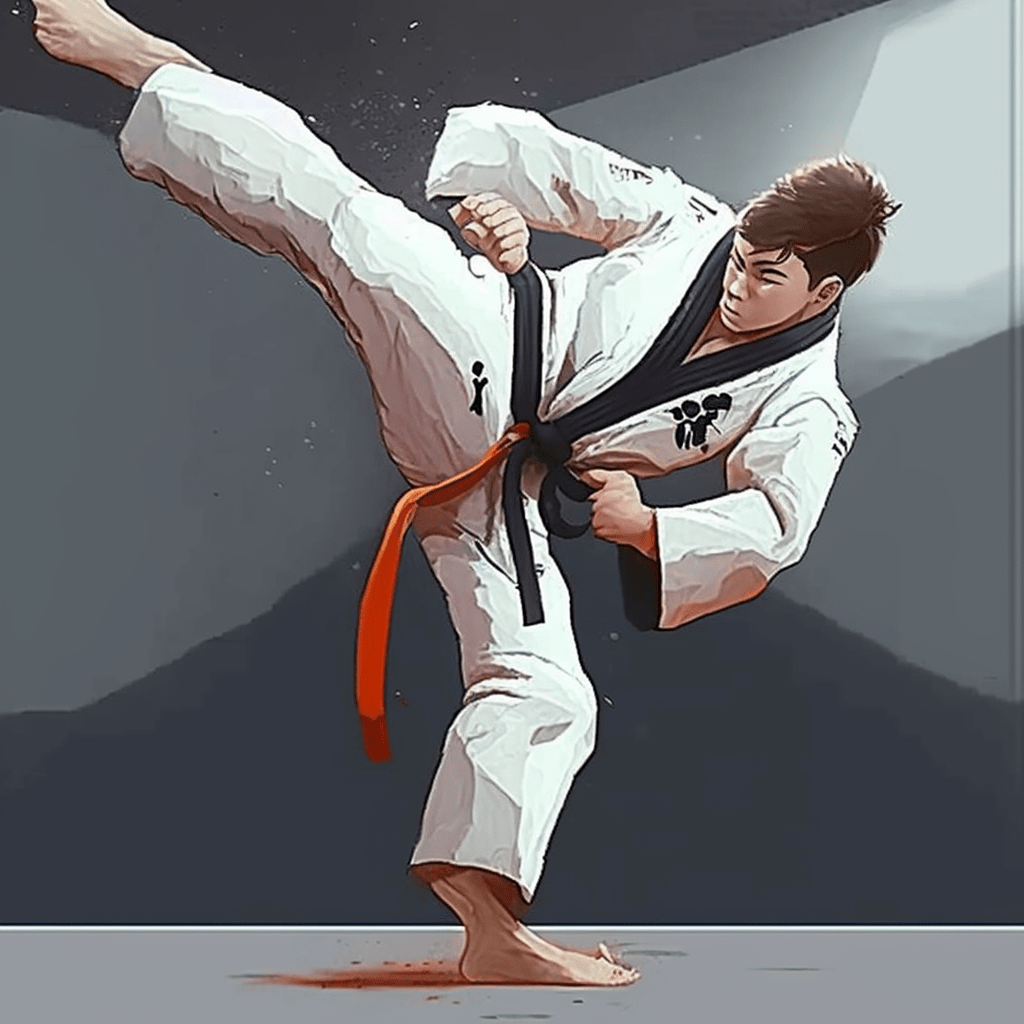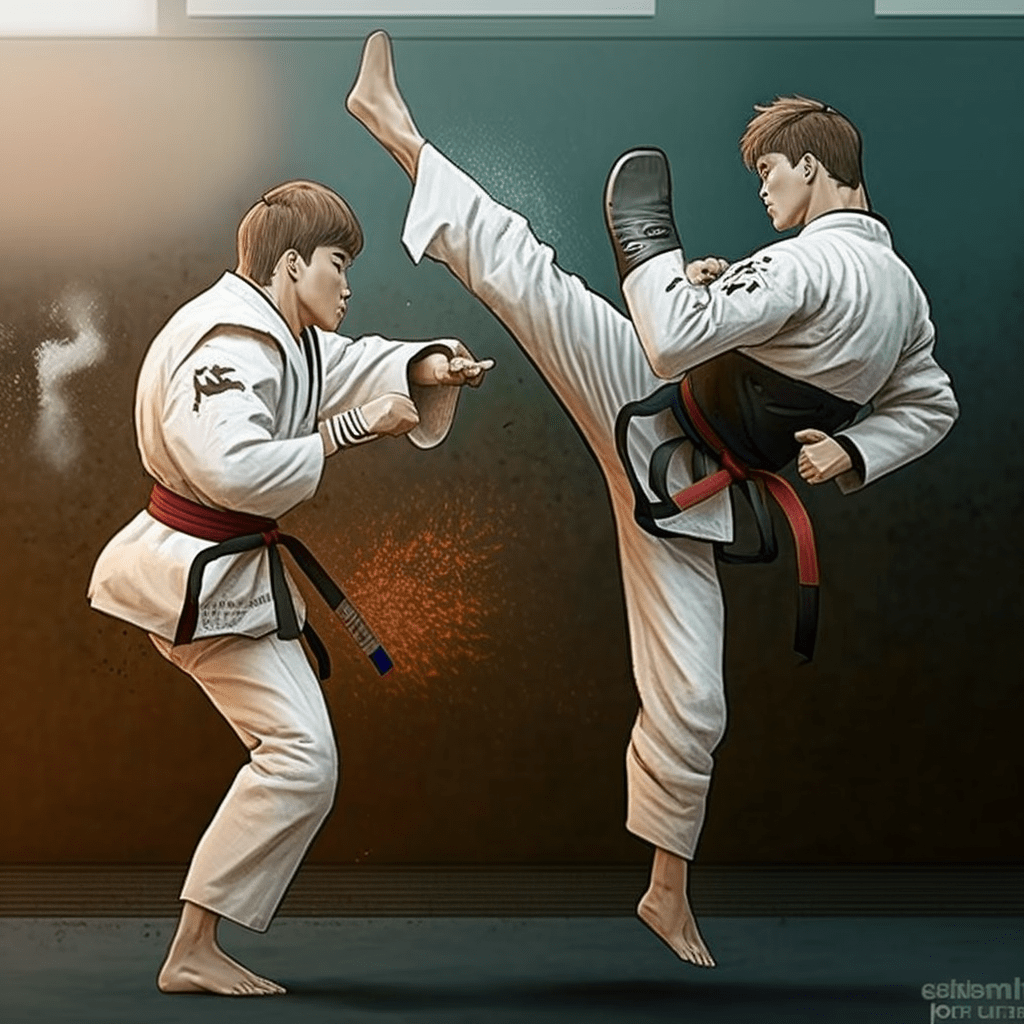Belt Rankings in Taekwondo
The Taekwondo belt system is an integral part of the martial art, providing a way for practitioners to progress and measure their expertise. Each belt level is color-coded, with white being the lowest and black being the highest rank. In some systems, belts may also have stripes or symbols that indicate the level of expertise. The progression typically goes from white to yellow, green, blue, red, and black.
It is important to remember that each belt level is a milestone in the journey to mastering the art. Dedication and practice are essential to ascend through the ranks, learning new techniques and honing existing ones.
The belt system in Taekwondo provides structure and allows practitioners to track their progress. It also encourages students to strive for higher levels of excellence, as each belt level is a sign of increased expertise.
By mastering the techniques of each level, students can further their understanding and skill in the martial art. This ultimately leads to a more complete understanding of Taekwondo and a greater sense of accomplishment.

White Belt
In Taekwondo, the white belt is the first step on the path to mastery. As a beginner, the white belt is a symbol of the commitment to the art and a recognition of the knowledge and effort that has gone into achieving this level.
Blocks, kicks, and the tenets of the sport become familiar to white belts. As the journey progresses, they learn and grow in confidence, becoming more adept at the techniques and principles of Taekwondo.
The belt system is a way to measure progress. It’s an important part of Taekwondo, as it shows a student’s dedication and development.
Yellow Belt
The requirements for the Yellow Belt are typically to learn and demonstrate basic techniques such as stances, blocks, and punches. As they progress, higher ranks gain a deeper understanding of the art and become more proficient in the techniques.
This journey of growth and development is marked by each new belt rank. It is an important part of mastering Taekwondo.
Green Belt
To achieve this level, students are expected to demonstrate improved strength, speed and flexibility, in addition to mastering basic techniques and forms.
As a result of achieving the Green Belt, students will be rewarded with increased confidence and experience in their training.
Furthermore, the student will be able to learn more advanced techniques and forms, as well as gain a better understanding of the Taekwondo philosophy.
Blue Belt
Each new paragraph should be in a <p></p> tag.
This blog post will explore the details of the Blue Belt in the Taekwondo belt system. Achieving the Blue Belt is a sign of dedication and hard work, and it typically takes several months up to a year to reach this level.
To earn a Blue Belt, a student must demonstrate a basic understanding of the fundamentals and forms of Taekwondo. They will be able to execute basic kicking and punching techniques with power and accuracy.
It is clear why the Blue Belt is an important milestone in the study of Taekwondo. It requires commitment and dedication to reach this level.

Red Belt
Reaching the Red Belt in Taekwondo is a significant milestone for practitioners, representing a level of proficiency and dedication to the martial art. Achieving the Red Belt typically requires practitioners to have trained for two to three years, learning a variety of advanced techniques and sparring combinations. Red Belt holders can demonstrate a higher level of proficiency in their Taekwondo practice.
Why is the Red Belt an important milestone for Taekwondo practitioners? It signifies a level of expertise and commitment to the martial art. It takes a significant amount of time and dedication to reach this level, and it is a sign of progress and development in the practice.
Black Belt
It is no secret that achieving a Black Belt in Taekwondo is a highly coveted accomplishment. To earn this highest level of belt ranking, practitioners must demonstrate a mastery of core techniques, forms, and sparring.
Achieving a Black Belt is a sign of dedication, discipline, and commitment to the martial art. It is a testament to the hard work and dedication of the practitioner.
Master Belt
How achieving a Master Belt in Taekwondo is the ultimate goal for many martial artists. For those who commit to the discipline and training, the Master Belt is the reward they seek.
This belt is the highest rank in Taekwondo and is usually black with a red, white or blue stripe. In order to be eligible for a Master Belt, a Taekwondo practitioner must have achieved the rank of 8th Dan.
This symbolizes the dedication and hard work of the practitioner and it is a sign of respect and honor.
There is no doubt that obtaining a Master Belt is a true accomplishment and a milestone in the Taekwondo journey.
Dan (Master) Belt
To be eligible for this rank, a Taekwondo practitioner must have achieved the rank of 8th Dan. This is the ultimate goal for many martial artists.
But what does it take to achieve a Dan (Master) Belt? To begin, practitioners must demonstrate a mastery of the art of Taekwondo. This includes understanding the principles of the martial art, being able to perform the techniques, and having a thorough knowledge of the rules and regulations of the sport.
Holders of a Dan (Master) Belt have a number of responsibilities. They are expected to act as mentors and role models to other practitioners, as well as teach the art of Taekwondo to those who are new to the sport.
The benefits of achieving a Dan (Master) Belt are numerous. It is a sign of respect and honor, and it serves as recognition of the dedication and hard work the practitioner has put in. It is also a symbol of achievement, and those who hold this rank are looked on with admiration.

Grand Master Belt
The Grand Master Belt is the pinnacle of achievement in Taekwondo, reserved for the most experienced and knowledgeable practitioners. To be eligible, one must have achieved a 9th degree black belt and have trained in the martial art for at least 25 years.
The Grand Master Belt is accompanied by a certificate of recognition from either the International Taekwondo Federation or the World Taekwondo Federation. This makes it a symbol of dedication and hard work, a sign of respect and honor.
Examples of Taekwondo Belt Rankings
We all have heard of Taekwondo, the traditional Korean martial art that is known for its dynamic kicking and punching techniques. But did you know that there is an intricate belt ranking system that is associated with the sport?
The belt ranking system in Taekwondo is divided into 10 ranks, starting from 10th Gup to 1st Gup. The 10th Gup is the entry-level and is usually a white belt, while 1st Gup is the highest and is usually a black belt.
The other belts, ordered from lowest to highest, include yellow belt, green belt, blue belt, red belt, black belt with a red stripe, black belt with two red stripes, and black belt with three red stripes. Every belt rank signifies a different level of expertise and knowledge in the sport.
Practitioners must strive for excellence to attain the highest belt rank. The Grand Master Belt is the pinnacle of achievement in Taekwondo, reserved for the most experienced and knowledgeable practitioners.
Summary
Taekwondo is an ancient martial art form that has been practiced for centuries, and is renown for its dynamic kicking and punching techniques. But why is there an intricate belt ranking system associated with the sport?
The belt ranking system in Taekwondo is divided into 10 ranks, starting from 10th Gup to 1st Gup. The 10th Gup is the entry-level and is usually a white belt, while 1st Gup is the highest and is usually a black belt.
The other belts, ordered from lowest to highest, include yellow belt, green belt, blue belt, red belt, black belt with a red stripe, black belt with two red stripes, and black belt with three red stripes. Each belt level requires a certain level of skill, knowledge, and commitment in order to reach the next level.
Practitioners must strive for excellence to attain the highest belt rank. The Grand Master Belt is the pinnacle of achievement in Taekwondo, reserved for the most experienced and knowledgeable practitioners.
FAQs

What are the basic principles of Taekwondo?
Each new paragraph should be in a <p></p> tag.
The belt ranking system of Taekwondo is divided into 10 Gup levels, starting from the 10th Gup (white belt) to 1st Gup (black belt). To progress to the next belt level, practitioners must demonstrate the skill, knowledge and commitment required. The Grand Master Belt is the pinnacle of achievement in Taekwondo, and is reserved for the most experienced and knowledgeable practitioners.
The basic principles of Taekwondo are the five tenets, which are courtesy, integrity, perseverance, self-control and indomitable spirit. These tenets are essential to mastering the martial art as they embody the values and ideals necessary to reach higher belt levels.
Learning and understanding the principles of Taekwondo is not only necessary for progressing to higher belt levels, but also for gaining proficiency in the martial art. A strong foundation in the principles of Taekwondo will enable practitioners to reach higher levels of skill and proficiency.
What is the difference between Dan and Master belts?
Taekwondo is a centuries-old martial art that is renowned for its powerful kicks and punches. But how does one rise up the ranks of this ancient sport? The belt ranking system of Taekwondo is divided into 10 Gup levels, with each level signifying a practitioner’s progress towards mastering the martial art. The two highest belts are Dan and Master belts, and they are the subject of much discussion among Taekwondo practitioners.
So what is the difference between Dan and Master belts? Dan belts are the traditional, color-coded belts that denote a practitioner’s skill and knowledge of the art. Each color belt indicates a different level of mastery, with white being the lowest and black being the highest. Master belts, on the other hand, are higher-level belts that signify a practitioner’s expertise and mastery of the martial art. These belts are black in color and have a red stripe running down the center.
It takes a great deal of dedication and hard work to progress from one belt level to the next. To reach a Dan belt, practitioners must demonstrate a commitment to the principles of Taekwondo and must possess the knowledge and skill to progress to the higher belt levels. Master belts, however, are only awarded to the most experienced and knowledgeable practitioners, and require a lifetime of dedication to the martial art.
So how long does it typically take to reach black belt level? The answer to that question varies depending on the practitioner’s dedication and commitment to the martial art. While some may attain a black belt after a few years of training, others may take much longer. It takes dedication, diligence, and hard work to reach the highest belt level, but the rewards of mastering Taekwondo are well worth the effort.
How long does it typically take to reach black belt level?
Achieving the highest belt rank in Taekwondo is no easy feat. It requires dedication, hard work and years of training.
Generally, it takes approximately 2-3 years to reach the black belt level. However, some practitioners have been able to reach this level in even shorter times, in as little as one year, or as long as seven.
The amount of time it takes to reach black belt level will vary depending on the individual and the style of Taekwondo they practice.
Every practitioner will have their own journey towards mastering Taekwondo, and the time it takes to reach the highest belt level can be greatly impacted by their commitment to the art.
What is the highest belt rank in Taekwondo?
When it comes to martial arts, Taekwondo stands out among the rest. This full-contact sport has grown in popularity over the years and its practitioners can be found all over the world. For many, their goal is to reach the highest level of Taekwondo, the 9th degree black belt. This belt rank is also referred to as a Grand Master, signifying the achievement of mastering the art.
Reaching this level of expertise requires dedication and years of hard work. The amount of time it takes to reach the 9th degree black belt can vary from individual to individual, but typically it takes anywhere from two to three years. Some individuals have managed to reach this level in as little as one year, while for others it may take up to seven years.
Achieving this level of mastery is no small feat. It requires a great deal of commitment and effort, and the amount of time it takes can vary greatly. With the right dedication and effort, however, it is possible to become a Grand Master in a relatively short amount of time.
Are belt rankings the same in all Taekwondo styles?
When it comes to martial arts, Taekwondo is one of the most widely practiced forms. Every practitioner aspires to reach the highest belt rank, the 9th degree black belt, also known as the Grand Master. But what does it take to reach this level of expertise?
The answer lies in the different belt rankings and their corresponding requirements. While belt rankings may be the same across all Taekwondo styles, the number of belts, the colours, and the requirements for promotion can vary. The amount of time it takes to reach the 9th degree black belt also changes from person to person, but typically it takes two to three years. Some individuals have managed to reach this level in a shorter amount of time, while it can also take up to seven years for some.
In any case, it’s clear that reaching the highest belt rank in Taekwondo is no small feat. It requires commitment, dedication, and hard work to achieve. With the right amount of effort and dedication, it is possible to master the art and become a Grand Master in relatively short time.
We can see that martial arts is a challenging and rewarding journey, but one that requires dedication and perseverance. Not every practitioner will reach the Grand Master level, but it is achievable with the proper effort and commitment.

